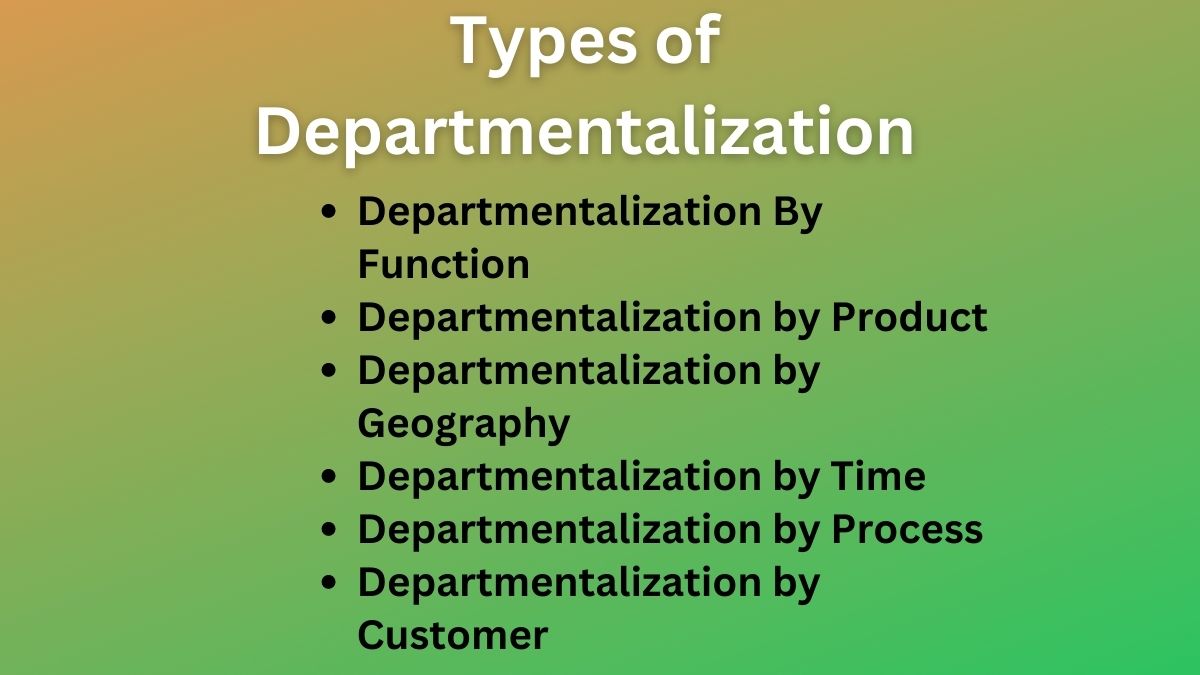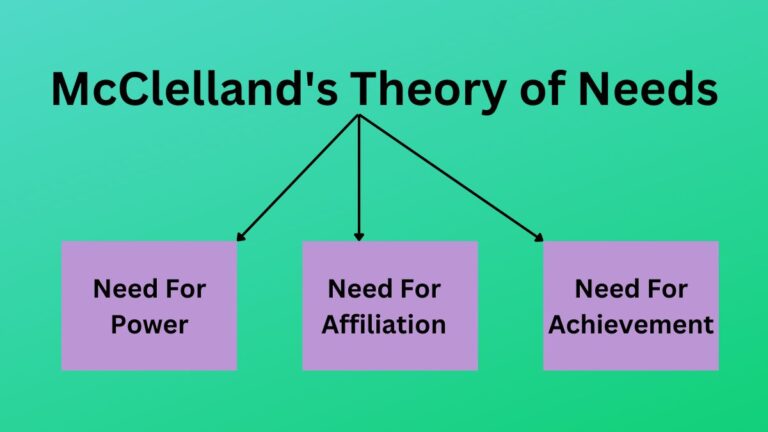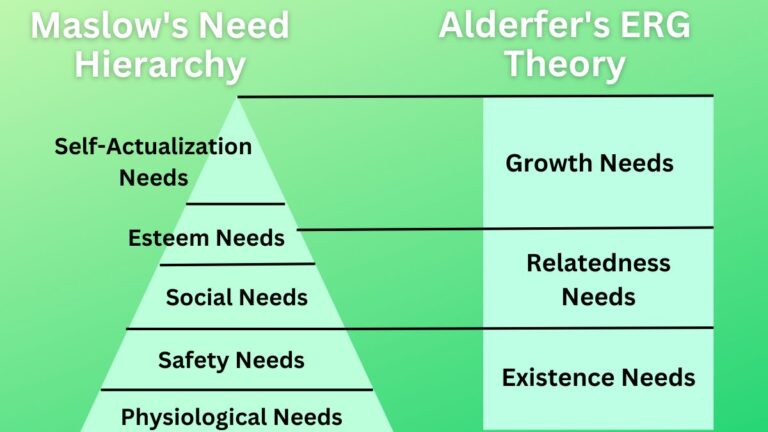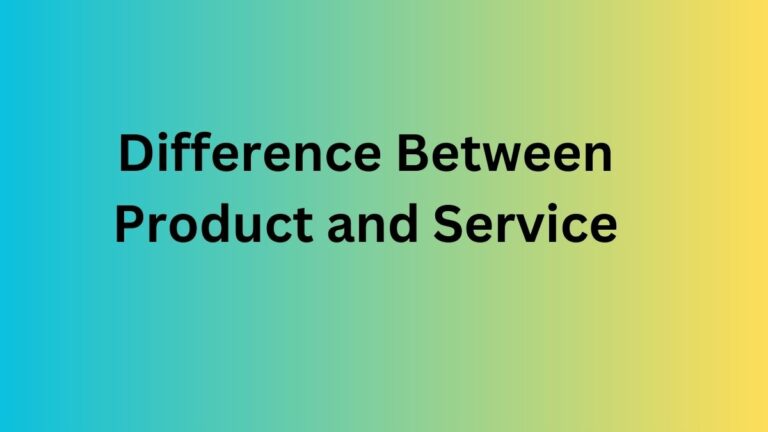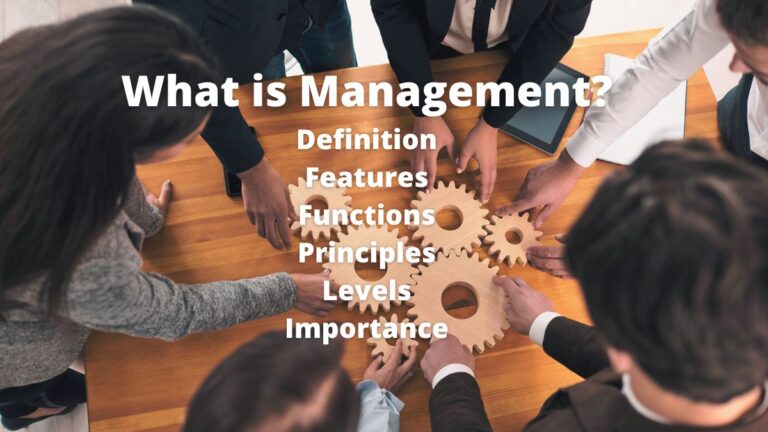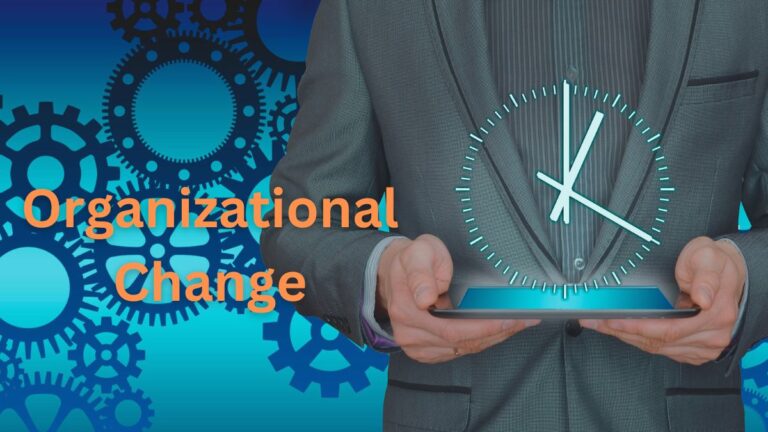6 Types of Departmentalization with Pros/Cons [explained]
Types of Departmentalization
Departmentalization is the process of creating specific departments for activities having a similar nature. It aims to make activities simpler and bring efficiency to the course of work done. There are different types of departmentalization following which you can create different departments in the organization.
The common types, also called methods, or bases of departmentation are mentioned below:
Departmentalization By Function
Functional departmentalization is the most common among the types of departmentalization that can be found in almost all organizations. Here, based on the organizational functions like marketing, sales, account, finance, etc. the necessary departments are created.
The advantages of specialization are offered by departmentalization by function. It only assigns specific assignments to specific individuals based on their interests and efficiency. Since the ultimate power is centralized, each departmental manager is responsible for the success of his own department and should submit reports to top executives.
Following are the pros and cons of departmentalization by function:
Pros:
- Provides benefits of specialization and economies of scale.
- Effective resource utilization.
- Employees’ efficiency and overall productivity are enhanced.
Cons:
- There can be delays in decision-making.
- May repetitive tasks increase boredom among employees.
- It does not promote creativity and innovation.
Departmentalization by Product
Product departmentalization can be defined as the process where different departments are created based on the product’s nature or product lines.
For each separate product or product line, a separate department is created and a departmental manager is assigned to manage the concerned department’s activities. This method is useful for organizations producing diverse products or various lines of products.
Related: What is Actual Product?
Pros and cons of product departmentalization:
Pros:
- Product quality can be enhanced.
- An effective method for large companies having different lines of products.
- Increased customer satisfaction, increased sales, and profitability of the firm.
Cons:
- There can be less effective coordination when departmental managers give more focus on their department rather than the whole company’s goals.
- There is a chance of conflict between various departments.
Departmentalization by Geography
Geographical departmentalization is when you create departments in the organization based on geographical locations. The locations may be provinces such as province 1, province 2, and province 3, or districts, countries, or even continents.
In this method, for every regional location, a separate department is created and added in it all the functional units are. This method is useful to address the local customers’ needs and satisfy them as they wish to be served.
Pros and cons of departmentalization by geography are,
Pros:
- Local customers are better served hence their satisfaction is increased.
- Suitable for organizations having operations in different areas or locations.
- It is an adaptable method to environmental changes.
Cons:
- It requires high administrative costs to successfully run this method.
- There can be problems of integration among different regional departments.
Departmentalization by Time
Time departmentalization can be defined as the process where you create different departments based on the time to perform the activities. The common departments created in time departmentation are the morning shift department, day shift department, night shift department, etc.
This is the most flexible type among other types of departmentalization. Employees feel motivated to work as the work is managed as per their needs. And, customer satisfaction also increases as it enables organizations operations 24 hours a day.
Pros and Cons of time departmentalization are:
Pros:
- It is a flexible method.
- There seems greater employee satisfaction and devotion at work.
- Customer satisfaction is at a high level.
Cons:
- Coordination is less effective among various shifts.
- The chances of shifting the responsibility from one department to another department remain high.
Read Also: Types of Organizational Structures
Departmentalization by Process
Process departmentalization is when departments are created based on the steps involved in the production process to make the final product. This method is followed when producing a final product consists of a complex process.
The major goals of process departmentation are to maximize productivity and ensure each manufacturing process’s functioning efficiency.
Pros and cons of the process departmentalization:
Pros:
- The quality of the product can be improved.
- A suitable method for manufacturing organizations.
- Ensures effective utilization of specialized skills and equipment.
Cons:
- This method is not suitable, especially in service organizations where the process is not clearly identifiable.
- All departments are dependent on each other and delay or mistakes in one department will affect the whole process.
Departmentalization by Customer
Organizations also need to serve diverse customers who have different needs, wants, preferences, and individual unique attitudes. When departments are created based on the nature and needs of diverse customers the departmentalization is known as customer departmentalization.
Here, based on specific customers’ needs specific department is created to serve them better. Banks are the most common example of this method where based on the customer’s type or need different departments are established such as loan, cash, CSD, etc.
Pros:
- Suitable option for organizations dealing with diverse customers.
- Customers can be treated well as their needs and wants can be easily recognized.
- A stronger relationship can be maintained between customers and the company.
Cons:
- There can be problems with maintaining proper coordination.
- It may be difficult to serve customers when their needs belong to two or more departments.
Read Next: What is Organizing?
Sajan Kushmi is a content writer with more than 4 years of experience. He holds BIM Degree. He write on the topics related to Management, Marketing, and Entrepreneurship.
